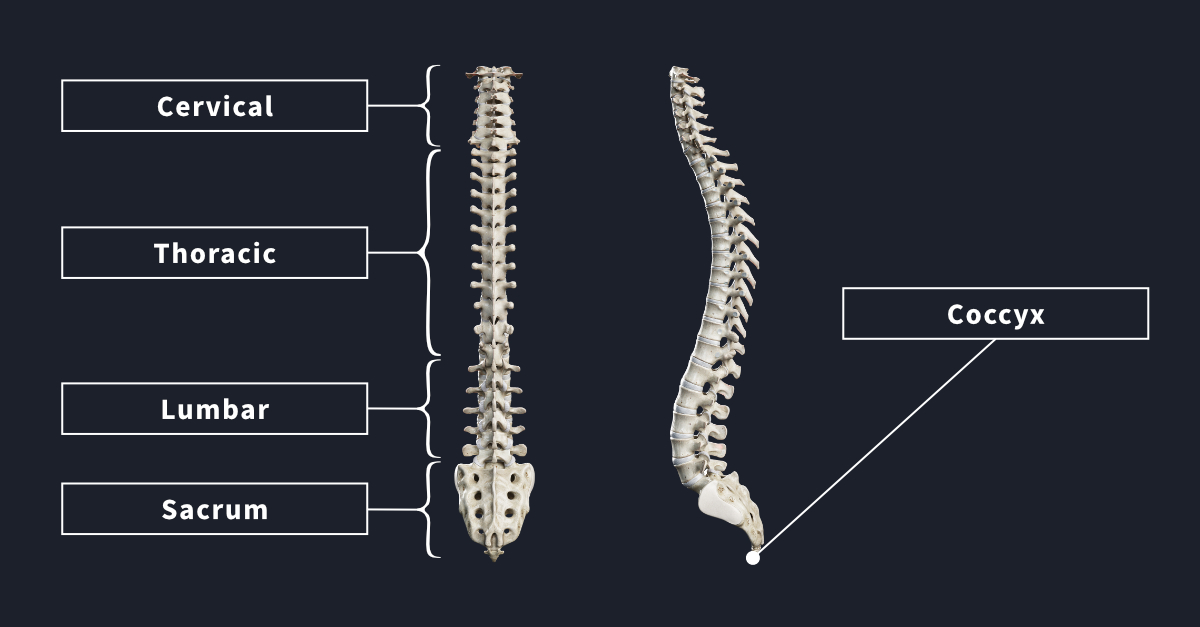
The vertebral column is made up of 33 individual bones stacked on top of each other. They form a curved bony structure along the length of the back. The vertebral column is important for the protection of the spinal cord that runs within the vertebrae. It is also involved in supporting and allowing movement of the body.
The vertebral column is divided into 5 regions. From top to bottom these are: cervical, thoracic, lumbar, sacrum and coccyx. The cervical region contains 7 vertebrae (C1-C7). The first two bones in this region, namely Atlas (C1) and Axis (C2), are considered atypical cervical vertebrae as their structure differs from the typical cervical vertebra. Atlas and Axis form the joint between the skull and the spine. The thoracic region contains 12 bones (T1-T12) and these vertebrae articulate with the 12 pairs of ribs. The lumbar region contains 5 vertebrae (L1-L5) and are the largest within the vertebral column. The sacrum includes 5 fused bones (S1-S5) that form a triangular structure. The sacrum articulates with the pelvis. The coccyx, also known as your tail bone, includes 4 fused bones.
The vertebrae are separated by intervertebral discs which act as a cushion between the bones. These discs form fibrocartilaginous joints that allow movement of the spine. The intervertebral discs make up about a quarter of the total length of the vertebral column.
The vertebral column can be affected by a number of disorders. For example, scoliosis involves an unnatural sideways curvature of the spine. Lordosis, also known as swayback, involves an increased curvature of the lumbar region. Kyphosis, or roundback, is when there is excessive curvature of the thoracic region.
To learn more about the vertebral column, check out our skeletal system model in Complete Anatomy.
